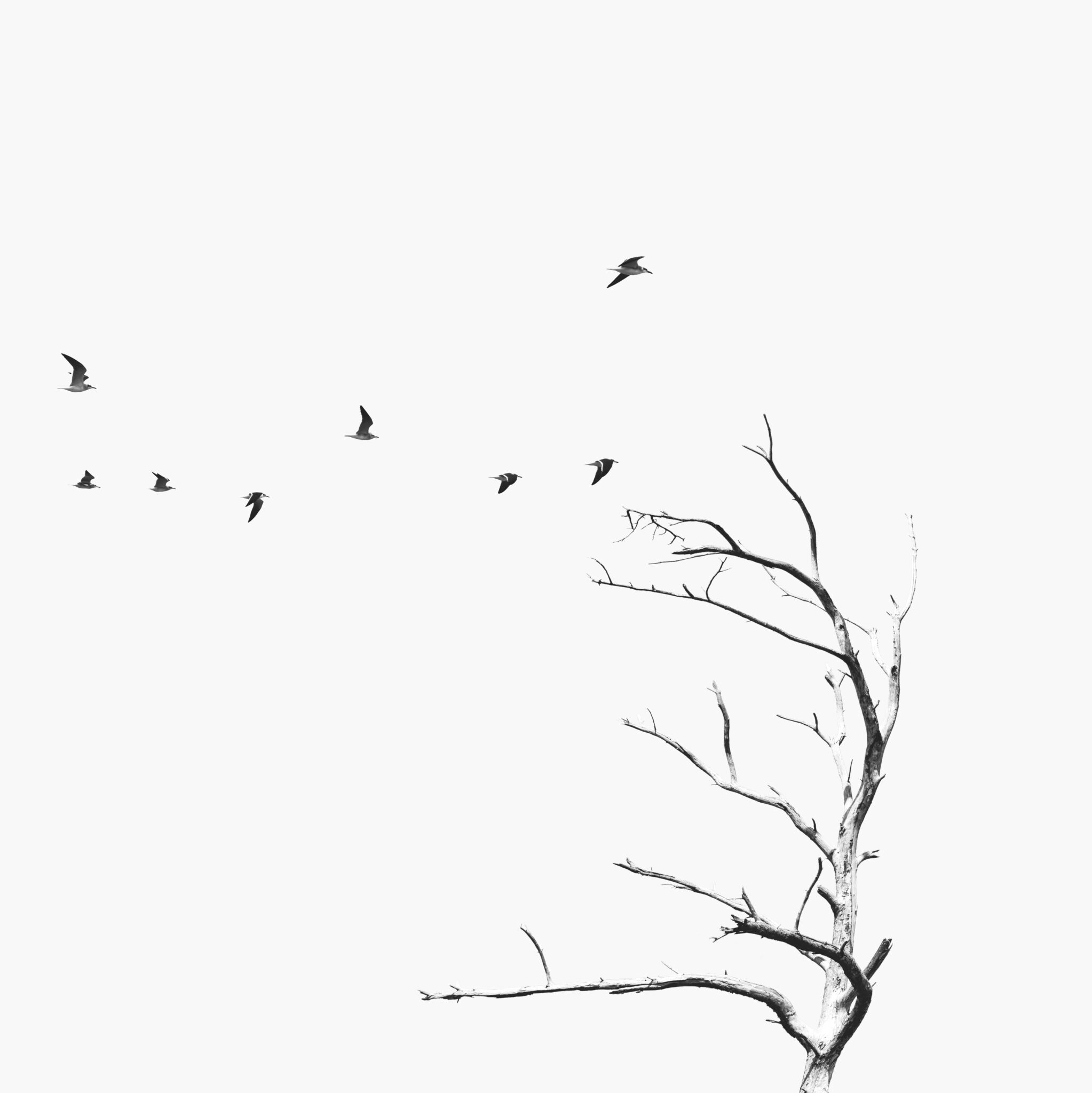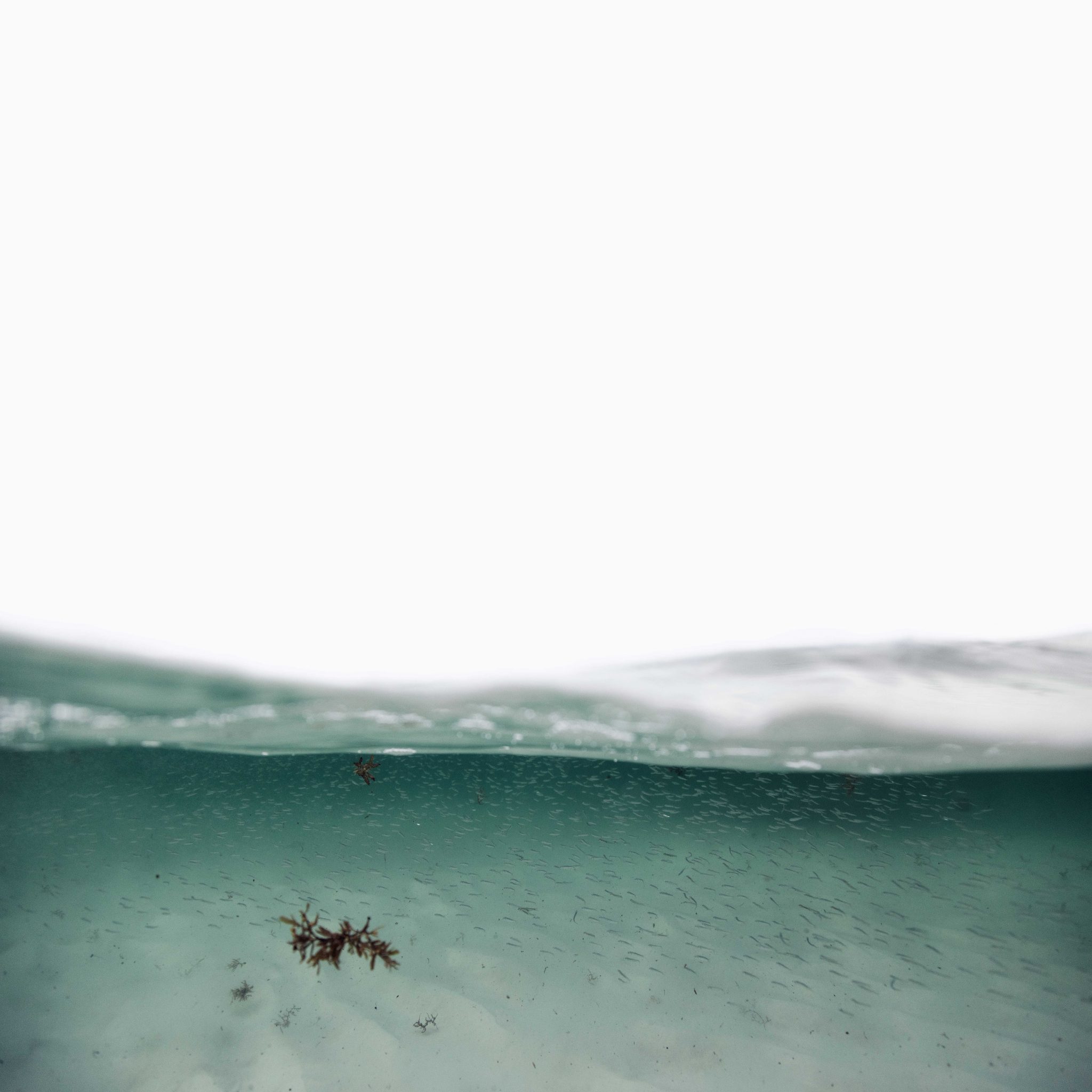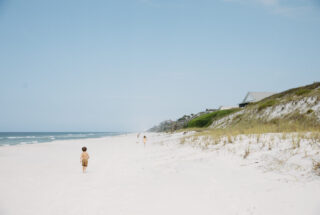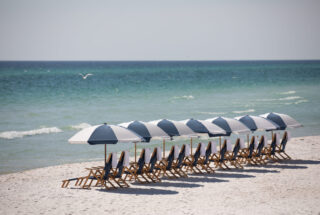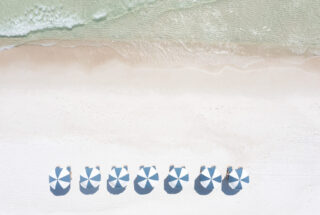As a fog sets in along the Gulf coastline, Mark Little walks out to the beach and drops to his knees in quiet contemplation. As if offering a prayer of thanksgiving for the sun peeking over the horizon, as if to let the day begin, Mark assembles his gear, preparing his camera to meet the water for the first time that morning. Wading past the break and up to his chest, Mark begins to capture the waves as they crest, becoming one with the surrounding tide. By design, his landscape imagery can evoke a feeling of reverence, of peaceful solitude. His signature work is shot in nature, typically during the early morning hours. Many times, he’s alone for extended periods.
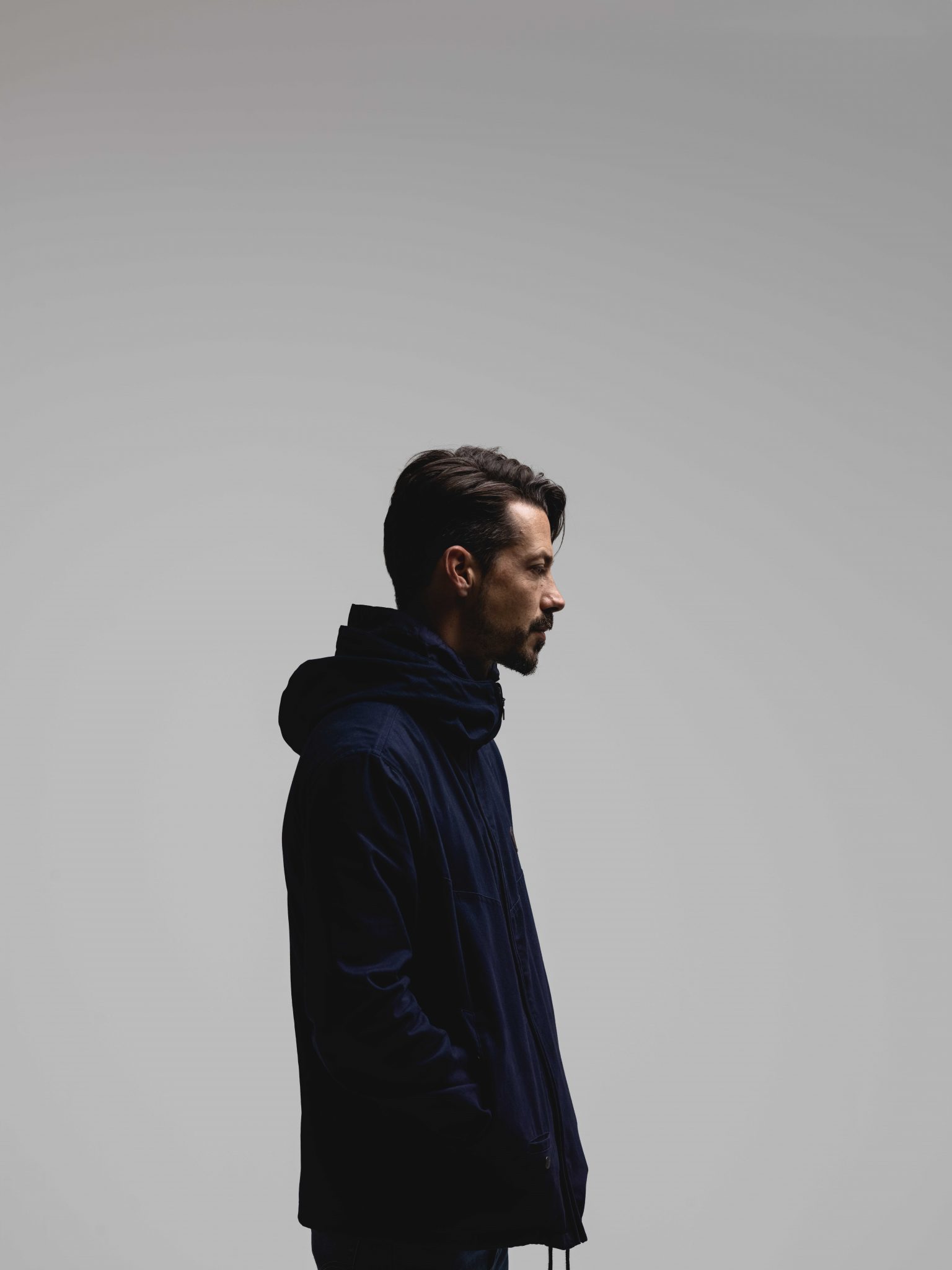

Mark explains, “My father always said, ‘If nothing’s happening where you are, you have two options: you either wait or you go someplace else.’ Sometimes I just sit out there for a while and get the feel of things. I love the peacefulness of it, the spookiness. I do that with any of my landscape work. I’ll just go out there and sit and wait.”
At 41, Mark has the life experience and perspective to make him patient in his work. “With photography, I feel like it can freeze time and slow things down to a bite-sized chunk so that you have time to explore that moment. So I love imagination. I love paintings. I love surrealism, but I love the balance of natural things. I love seeing something that’s real. A true moment in time. A wave, someone laughing. Something that—in an instant—is gone. I love being able to capture that. And hopefully, if I’m in the right place at the right time, I’m able to capture something that has a little magic to it. Something that makes you say, ‘Wow, that was a little journey.’” Mark focuses less on the technicalities of photography and more on capturing an image that provokes emotion and thought. He explains, “Some of my favorite images are a little out of focus; the composition isn’t perfect. It’s life. There’s a lot that we plan and a lot that we’re just on a ride for. It’s the flow of things, and, oftentimes, it’s the flow of things that we remember more than the plan.”
It’s the quest for perfection in the imperfect that drives him as an artist. In conversation, Mark has a relaxed and casual energy that serves as a good counterbalance to the starkness of his work. In support of this tension, mortality is an important theme for Mark; his work is often based on the interdependent relationship between life and death. Expanding on that balance, he clarifies: “In nature, the images that I’m drawn to capture are of dead trees. I particularly love them because they showcase this symbiotic relationship, yet they still give us so much beauty. Birds are playing and nesting in the trees; flowers grow around the base. You see them a lot, particularly in the desert, and it always interests me as a photographer.” A desert is a place of refuge and relaxation for Mark. The sense of wonder that arises from the expanse of the landscape is awe-inspiring for him. He explains, “Death Valley is my favorite place on Earth. It’s so big and wide open and vast and seemingly empty. It seems like there’s nothing out there. Of course, there is, but you have to search for it. It speaks to me more than any other landscape, I think. You can see so far and it makes you feel so small.”
There are 1,927 miles between Death Valley, California, and Birmingham, Alabama, where Mark was raised. While he would eventually find his way to photography, a young Mark Little fiercely wanted to become a musician. According to Mark, “My parents were reformed hippies. My dad played in a rock n’ roll band—he was a keyboard player—my mom went to Woodstock.” He says, jokingly, “Times were different then. When I was a teenager, I wanted to play music and my parents said, ‘No, absolutely not. You’re not going down that road.’ Of course, like any kid, you’re going to find a way to do it.”
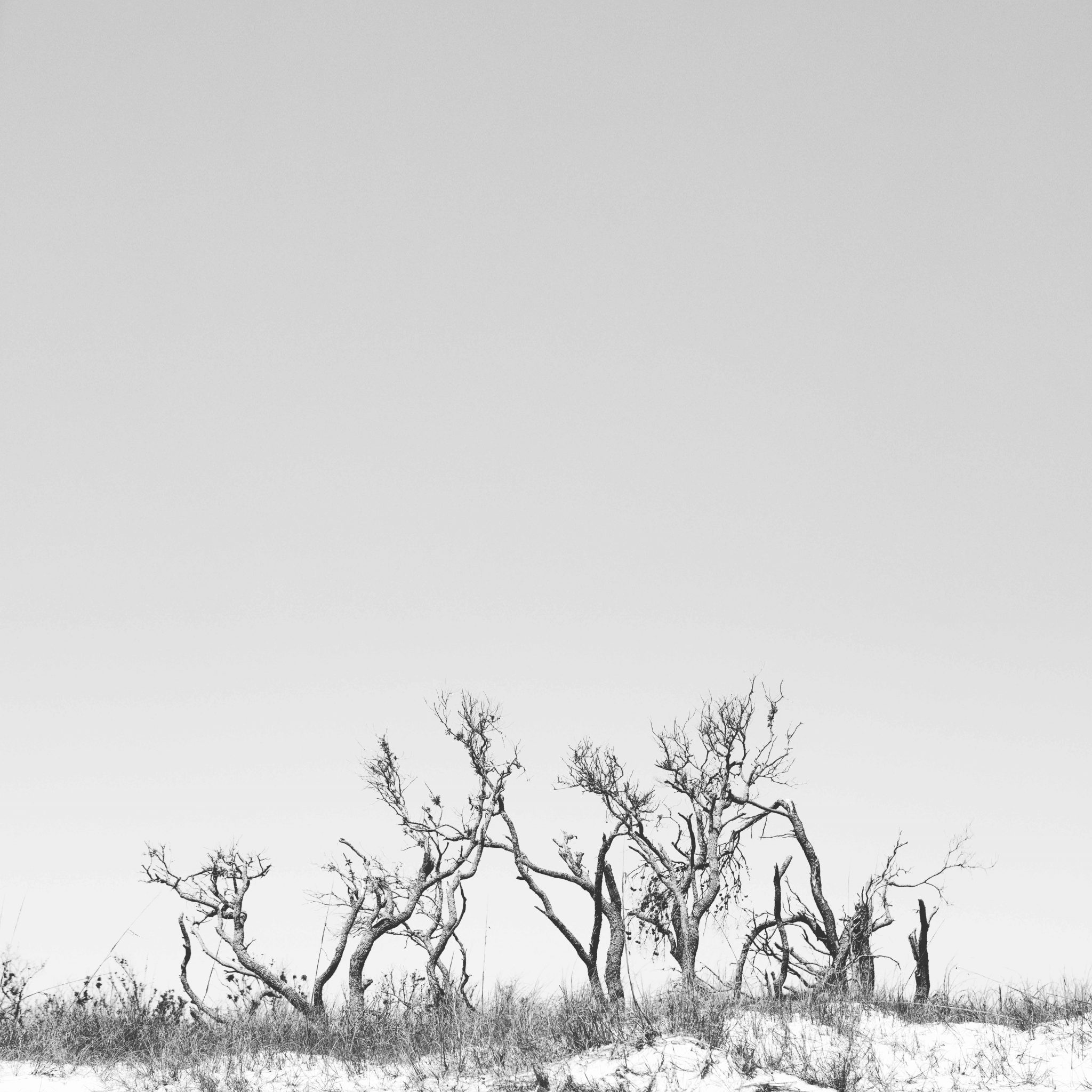

After graduating from Auburn University, Mark found work in a studio in California and was able to learn the ins and outs of recording, something he has found to be foundational in his life and work. As he explains, “Music has always been a big inspiration in my life in general, and when I get stuck creatively or life gets busy, I have to make sure I’m still playing and getting the creative juices going. I’ve noticed about myself that if I don’t play for a while—don’t record, don’t write something—the other side (creativity) takes a dive.”
He defines himself as both a photographer and a musician and, through music, finds a way to evoke a mood when he’s in his studio. Mark explains, “When I edit, I edit to ambient music. Just strange stuff. When I’m editing, I have to get in the zone, so I can’t have lyrics—it just throws me off. Lyrics will distract you. When I’m cruising and just living life—Oasis, Black Rebel Motorcycle Club, grunge, Stone Temple Pilots, Leonard Cohen, Tom Waits—it’s a variety. I need something to evoke a mood and find the right thing that I’m feeling and just let it go. I love rock music; Leonard Cohen to Oasis – that’s a pretty broad range [chuckles], but when it resonates, it resonates.”
A resident of 30A for the past 12 years, Mark enjoys the artistic collaborations seen throughout Alys Beach, particularly the immersive experience of Digital Graffiti. “A platform like Digital Graffiti has more of an editorial feel. You have a chance to say something and provide real commentary. The sky’s kind of the limit; the buildings are the limit, and I do like things to be tangible; to be able to go up and look at them and touch them and experience them. I feel like when you see the images put up on a wall, it feels different than seeing them on a computer screen. Life’s no fun in .jpg.”
From a digital perspective, Mark is a champion for including audio aspects in visual art. He clarifies, “Audio helps tell the story. Memory, for instance. There’s a lot of things that trigger memory with sounds and smells that don’t have to do with our eyes and activate different parts of our brain.” In contemplation of what is to come, he is excited to push boundaries and step beyond his current existence as an artist. He explains, “As an artist, the struggle is the point, and I will always want to push myself to expand and try different things. These limits that we place on ourselves are based on the fear of the ‘what if.’ Think about what you could accomplish if you didn’t have that fear. I’ve had bouts with that—getting bumped in the water (by unseen sea life) or having nasty rattlesnakes snap at me.” Chuckling, he notes, “I’m not saying I want to go out that way. I am saying that I don’t want to be afraid of it either. I still want to experience life in all its fullness.”
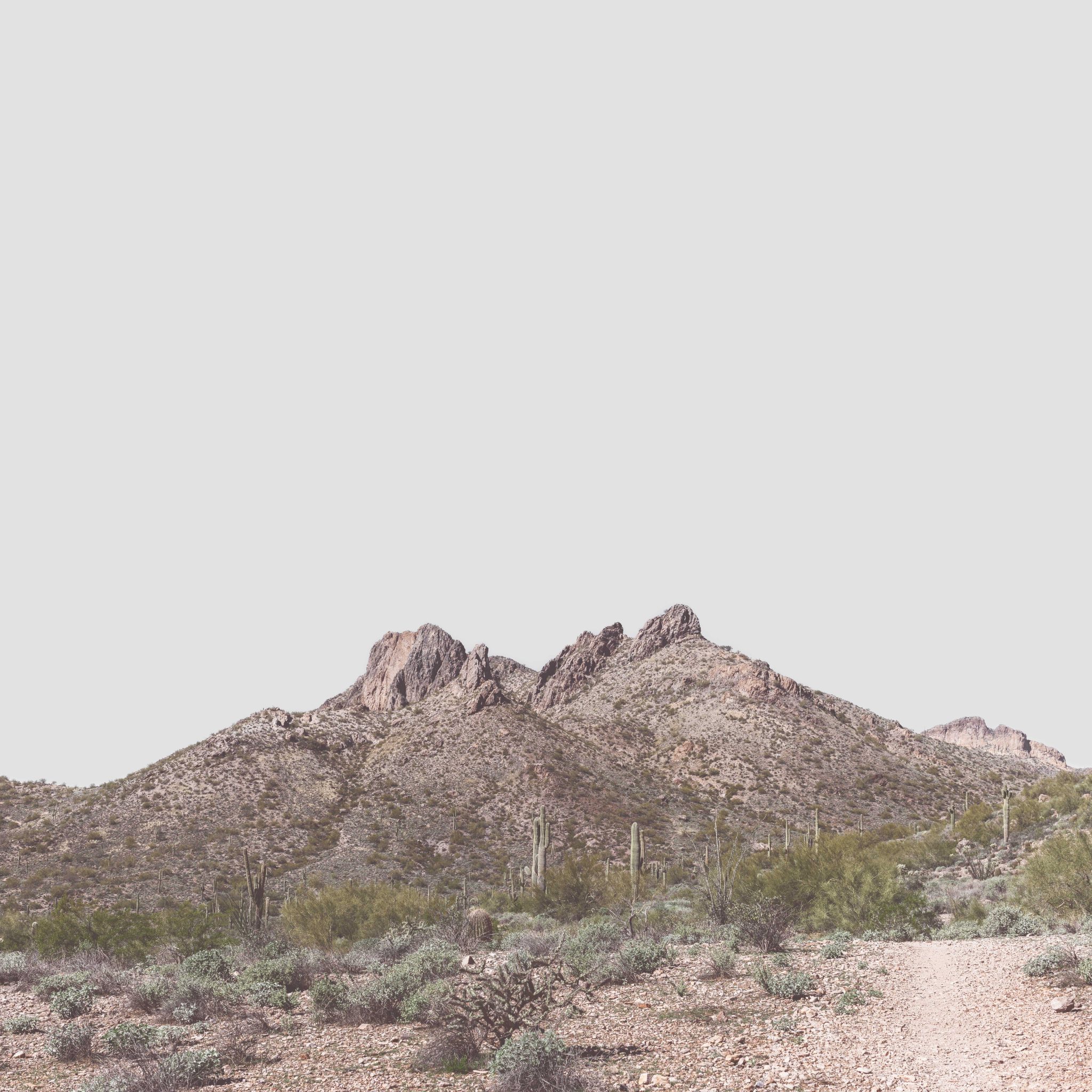

With steadfast intention, Mark contemplates endeavors in art and life as a foundation for the future. He summarizes by saying, “Hopefully, we have the same resolve in our lives. Things we’ve passed on to other people or things that we’ve stood for, I hope, will continue to help people in the future. It’s a great visualization to me, and it’s all we can hope for as humans. I’m doing the best I can with what I have, and I am a firm believer that you’re right where you’re supposed to be. I’m going to be confident in that and keep going.” And as another dawn breaks on the Florida Gulf coastline, Mark Little, camera in hand, will wade into the water. Letting the tide wash over him, he will seize the magic of a fleeting moment, beckoning the beginning of a new day.
